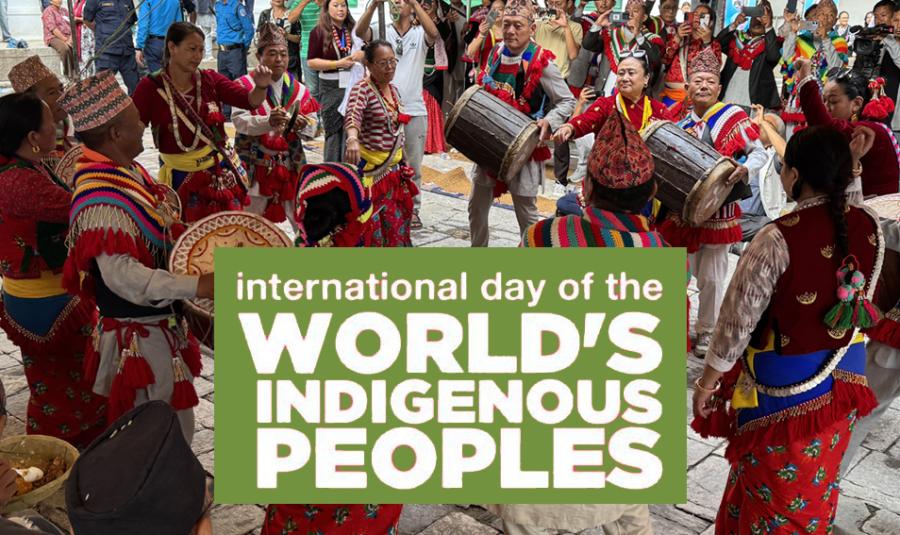An interesting new volume from the Alliance of Religions and Conservation (ARC) spotlights environmental advocacy within the world’s 11 major faiths in 60 countries to convey a simple but powerful message: Through storytelling, celebration, practice, spiritual guidance, community activism, and advocacy worldwide, faith groups can be powerful and effective partners in conservation.In the 2004 World Bank report, Faith in Conservation: New Approaches to Religions and the Environment, authors Martin Palmer and Victoria Finlay describe the manner in which ARC works to help the major faiths develop their environmental agendas. The basic premise is that only such partnerships will help curtail the accelerating spread of deserts, the destruction of forests, and the annihilation of core species of the seas.
Two-thirds of the world’s population is represented by these religious groups, which include Christianity, Islam, Hinduism, Daoism, Baha’I, Jainism, Judaism, Shintoism, Buddhism, and Zoroastrianism. They own around seven percent of the habitable surface of the planet and they have a role in 54 percent of all educational institutions. In addition, says World Bank President James Wolfensohn in the report introduction, their institutional share of the investment market is in the range of six to eight percent.
At the heart of the report are case studies detailing how local people identify solutions to environmental problems in their histories and time-honored traditions, and then draw upon the authority of the faith group to ensure implementation. In 1999, for example, Sikhs (who measure time in 300-year units) dedicated the next 300 years to the care of the environment. In China, Daoists now treat the land as a “sick person” who needs to be reconnected with the natural flow of life and the balance of yin and yang. In the late 1980s, 6,500 British churches embarked on a project to create native wildlife ecosystems in their churchyards. In a similar vein, a formerly conservative Javanese community came to realize that protecting the environment was part of Shariah, or Muslim law, and took it upon themselves to protest the desecration of mountain forests by corrupt government officials. One fascinating anecdote centers on India’s sacred Yamuna River. In the 1990s, the river (which flows into the Ganges) contained dangerous levels of contaminants and the local Hindu community drew upon the legend of Lord Krishna’s three-day battle with a polluting river-dwelling serpent as an essential strategy in their fight for the waterway’s survival. Some believed that the contemporary cause of the river’s near-death was the return of the evil spirit in a new and uglier form—unchecked development and irresponsible business practice. Today Lord Krishna needs human beings to be his hands in the battle against the serpent and the pollution it engenders.
While it is encouraging to see the World Bank rally behind faith groups in critical ecosystem protection, it is disappointing that ARC does not consider in this report the important role of indigenous peoples as the original stewards of the environment. While indigenous peoples make up just five percent of the world’s population, they occupy up to 20 percent of the earth’s surface area, and it is their lands that are so often the target of developers, including miners, dam builders, loggers, and tourism entrepreneurs. Indigenous peoples lack political power in any real sense, have limited investment clout, and frequently live beyond the reach of the major religions. And yet, more and more, the world is coming to realize that there is long-term benefit in supporting indigenous struggles for environmental and social justice. Cultural survival and conservation go hand in hand, and the plight of first peoples should be of major concern to all faith groups.
In this issue of Cultural Survival Quarterly, contributors review one area of exploitation that will surely inspire members of faith groups to action: the insidious practice by states of establishing protected areas for conservation purposes and then excluding and dispersing the indigenous peoples who are the lands’ traditional owners.
At the Rio Earth Summit in 1992, the international conservation community committed itself to securing 10 percent of all lands in protected areas. In this quest, however, the fundamental rights of indigenous faith groups have often been ignored. They have been denied the right of possession of that which is most precious—their ancestral lands. Consider the expulsion of San Bushmen from the Central Kalahari Game Reserve and the Chobe National Park in Botswana; the dispersal of Veddas from their forest home in Sri Lanka; and the Russian zapovednik system (nature protection in the strictest sense), which has denied the reindeer-herding Evenki entry to their territories for traditional activities or worship. Just recently, as Cultural Survival Quarterly reports in this issue, an indigenous Garo youth in Bangladesh was slayed by forest guards during a protest against the Ministry of Environment’s plans for a Botanical Garden and Eco-Park.
Under the guise of environmental and biodiversity protection, states are sacrificing cultural diversity and a unique opportunity to partner with those peoples who, in many cases, can draw upon advanced knowledge of conservation practice and practical expertise not available in the broader community.
Religious groups are in a powerful position to “save the world” but congregations must be prepared to search deep within themselves and their cultural and religious traditions for ways to partner with those with different beliefs to search for environmental and social justice. While powerful majorities continue to enjoy the benefits that accrue from exploiting the lands of the poor and marginalized First Peoples, it is nothing less than a sacred duty for faith groups to work toward repairing the damage (both social and environmental) and repaying the debt. Securing the rights of indigenous peoples to lands now secreted away as “protected areas” is a necessary step in the healing process.
Ian S. McIntosh is senior editor for Cultural Survival.


